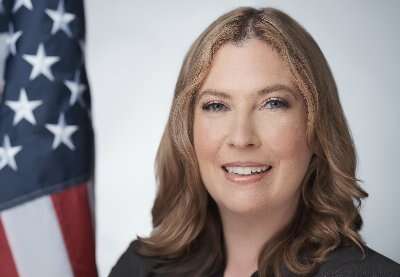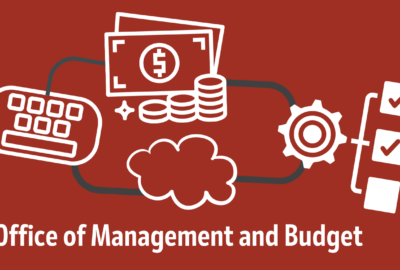American Rescue Plan Act funding continues to pay dividends for GSA’s TTS
Ann Lewis, the new director of TTS in GSA’s Federal Acquisition Service, said her organization’s goal is to get the right tech skills into the right place to...
The Technology Transformation Services in the General Services Administration has been using the $150 million provided under the American Rescue Plan Act to modernize citizen facing services.
This is exactly the type of work the Obama administration created TTS to take on back in 2016 – “federal agencies are increasingly looking for assistance in identifying the best path to take or the best tools to use in implementing technological transformation,” said then — GSA Administrator Denise Turner Roth in her May announcement creating the new organization.
One example of that work in fiscal 2022 was with the Department of Housing and Urban Development. TTS’ technology and product experts helped HUD improve an application, the counseling locator tool, that lets homeowners access housing counseling services more easily.

“Our technical experts embedded with this team and helped them improve the site’s accuracy and speed. We also broadened the effort to include related programs like mortgage relief. As a result, people are using the new self-help tools to more easily access information and get services quicker and call center volumes for that tool is down by 90%,” said Ann Lewis, the new director of TTS in GSA’s Federal Acquisition Service, on Ask the CIO. “This is an example where getting the right tech skills into the right place with taking a pragmatic approach really helps to deliver better outcomes for the public. We also saw a spike in demand during the pandemic for cross-agency services that needed to go digital first.”
That spike in requests for TTS’ services led to the funding windfall from Congress. The office used the $150 million from the American Rescue Plan Act and other funding to work on 40 initiatives in 2022.
The HUD example is indicative of TTS’ goals in modernizing agency systems.
“The work included modernizing the Housing Counseling Locator website as well as the interactive voice response (IVR) system to help users access information using the channel of their choice. In addition, the team integrated the National Servicing Center (NSC) SMART system and Federal Housing Administration (FHA) Resource Contact Center’s modern customer relationship management (CRM) tool which eliminated the manual activities that are required to complete the service requests,” TTS wrote in its 2022 annual report. “As a result, people are using the new self-help tools to access information faster which will allow constituents to receive counseling services quicker. The NSC SMART to CRM direct integration allowed HUD to deploy staff to other high-priority activities. The total estimated savings in the first year of the integration of the two systems was $587,000 — a 112% return on investment based on the cost of the ARP project. All additional future years will have an estimated savings of $737,000.”
Through the ARP funding, TTS worked on several other projects including with the IRS to build an application to let citizens directly file their taxes and with the National Weather Service to improve Weather.gov.
Funding FedRAMP, AI projects
Lewis said the ARP funding also went toward improving the Federal Risk Authorization Management Program (FedRAMP) and pursuing projects led by the centers of excellence around artificial intelligence and large language models.
“They’ve put together an event called the Applied AI Challenge that’s focusing on large language models. We think public-private partnerships like this are an exciting and critical way to bring the best ideas into government,” she said. “Many TTS product and program teams will be working together on projects related to the 21st Century IDEA Act, which is a great framework for helping government agencies understand the best and most pragmatic ways to modernize.”
Lewis said TTS’ investments in FedRAMP and the 21st Century IDEA Act will be more important as the programs evolve and ramp up over the next year.
The Office of Management and Budget released the digital service memo, which Federal Chief Information Officer Clare Martorana called a 10-year roadmap, and draft guidance to update FedRAMP.
“We used some of the American Rescue Plan Act funds to help clear the backlog of FedRAMP authorization requests for both new and existing cloud offerings. We still have more work to do to modernize FedRAMP,” she said. “We see the opportunity and the challenges with FedRAMP, so we’re building up the team and doing some hiring to make the team larger and bring more skill sets into the team. We’re investing in automation to improve the authorization and continuous monitoring processes. We think bringing in the right tools and building out the team will help us deeply understand all of those processes and figure out the right ways to scale them so that we can build the right cloud service provider marketplace that truly serves the federal government’s needs.”
TTS striving for operational excellence
Around the IDEA Act, TTS has promoted the implementation of U.S. Web Design System (USWDS) standards. It developed guidance to help agencies put diversity, equity, and inclusion at the forefront of digital service design.
“In today’s era, if you need to build a new website, you start with something called a design system that gives you a scaffold for how all of the best practices around accessibility, interoperability, form styling, etc, how those are all put together as a scaffold for future web development. If you start with the US Web Design System, then we do a lot of that work for you so agencies don’t have to do it over and over again,” Lewis said. “When more agencies adopt the USWDS, they begin to share common look and feel and common set of modern best practices. Today, over a billion page views a month come from websites that use the USWDS. And finally, platforms, these are inter agencies experiences that create cohesion and economies of scale across agency boundaries. When the public needs to interact with potentially multiple agencies around the same or similar need, we can see across those agency boundaries help understand the user experience, end-to-end. And we can help agencies build and operate government wide platforms that enable and centralize those interactions, ultimately reducing barriers for access for users.”
Lewis said TTS’ mantra for 2024 is operational excellence. She said that includes building back their culture, applying high standards to leadership and program management and ensuring agencies have the right tools and processes to plan and deliver technology improvements.
“We’re also investing in program management. We’re building our compliance and governance capacity. We’re identifying where we need to improve governance processes. I’m personally investing in cultivating leaders in TTS. I think that’s absolutely important at this stage and TTS’ growth,” Lewis said. “Organizationally, we’re doing a lot of organizational development activities to de-silo teams, connect up expertise, create internal and external economies of scale, when we’re able, and make sure that all the best practices that we learn about are applied internally as well as externally. Ultimately, to me, TTS is about people products and platforms. By people I mean, discovery, implementation and consulting work to catalyze agency progress. When agencies need expertise to help define plan and execute a vision for digital services. We partner with the agency while also helping them understand how to build capacity. By products, we mean shared infrastructure and tooling that helps agencies deliver faster and with lower risk and lower cost. We’re all aware agencies and programs are doing a lot of work in parallel.”
Copyright © 2025 Federal News Network. All rights reserved. This website is not intended for users located within the European Economic Area.
Jason Miller is executive editor of Federal News Network and directs news coverage on the people, policy and programs of the federal government.
Follow @jmillerWFED








